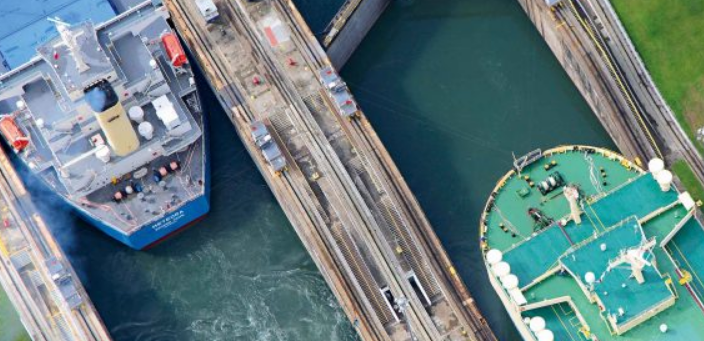SEA\LNG released a study revealing a strong investment case for LNG as a marine fuel in the container shipping market. Peter Keller, Chairman, SEA\LNG, noted that the results show that for this type of vessel, LNG can deliver the best return on investment on a net present value (NPV) basis over a conservative 10-year horizon.
Namely, the study analysed the case of a newbuild 14,000 TEU container vessel operating on an Asia-US West Coast (USWC) liner routing and compared six fuel pricing scenarios.
[smlsubform prepend=”GET THE SAFETY4SEA IN YOUR INBOX!” showname=false emailtxt=”” emailholder=”Enter your email address” showsubmit=true submittxt=”Submit” jsthanks=false thankyou=”Thank you for subscribing to our mailing list”]
Specifically, it found that, LNG is the best investment across a broad spectrum of business climates from strong freight markets with high vessel operating speeds to weak freight markets where slow steaming is employed.
The study also indicated that LNG provides a greater ROI than other compliance solutions, including the installation of scrubbers, across 5 out of 6 of the fuel scenarios explored. It also revealed a reducing CAPEX hurdle, competitive energy costs, the stability of LNG pricing, and the realistic cost of scrubbers.
More specifically, the report found the following:
Diminishing CAPEX hurdle
The high capital expenditure (CAPEX) for LNG engines and fuel tanks was a barrier. However, recent shipyard prices show smaller LNG premiums above traditional vessels. This is because of extensive LNG newbuilding experience and technology improvements.
Competitive energy costs
Fuel is historically bought on a dollar per ton basis, however the transaction is really about buying energy. LNG offers a lower energy cost per ton, whenever priced against Heavy Fuel Oil (HFO) by almost 24% because it includes more energy for a given mass.
ECA voyage times not so relevant
LNG was once only considered a viable investment choice as a marine fuel for ships whose voyages comprised a substantial percentage of their voyage time spent in ECAs. This study noted a compelling case for LNG as a marine fuel even for operations that spend a limited amount (single digit percentages) of the voyage in ECAs.
Most financially effective long-term means of complying with 2020 sulphur cap
The report says that LNG as a marine fuel provides a greater return on investment than scrubbers across a majority of the fuel scenarios. There is one exception, this of a stranded fuel forecast with plunging HFO pricing. Despite the fact that this stranded scenario is possible, it is deemed unlikely because of increasing, but small number of scrubbers currently ordered in time to take advantage of the expected drop in HFO pricing from 2020.
Scrubbers are more expensive than reported
According to the study, media cited scrubber costs ranging from $2 million for new build and a little more for retrofits to current vessels. However, for higher-powered ships the scrubber costs are higher and so too are LNG benefit gains. Another finding of the study is that LNG fuel’s OPEX cost savings lead investment returns whose strong performance remains almost the same when challenged by lower CAPEX scrubbers.
Stable LNG cost
The cost of LNG is comprised of the natural gas (25%), along with a generally fixed liquefaction fee to cool the natural gas to a liquid state and the transportation costs which can be contracted on a long term basis (75%). As a result, LNG pricing is more stable than traditional maritime fuels.
This relationship directly contrasts with HFO or diesel where the underlying commodity oil dominates costs. A century of infrastructure and refining improvements has driven these incremental costs downward. As a consequence, the cost of LNG marine fuel bunkers continues to remain less volatile than traditional oil based marine fuels
SEA\LNG concluded.
See further details in the PDF herebelow





























































